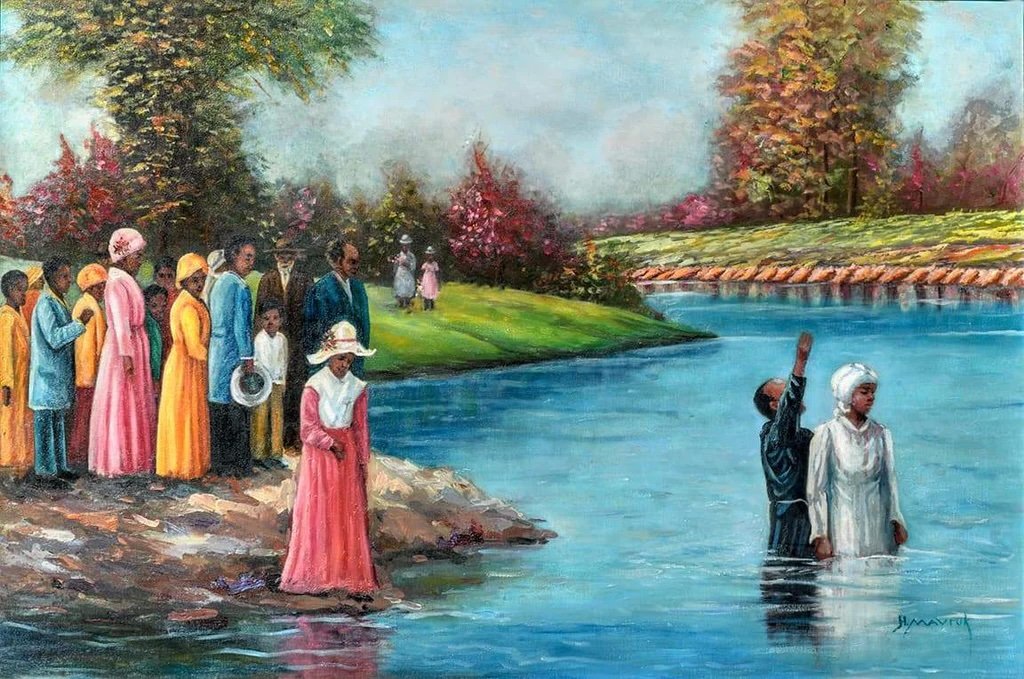Shiloh Missionary Baptist Church: Another Little-Told Tale of African American History in Alabama
The historic significance of Shiloh Missionary Baptist Church on Selma Road will soon be recognized with a plaque bearing the seal of Black Heritage Council of the Alabama Historical Commission. Plan on being there for the dedication!
To borrow from one of the song lyrics in Hamilton, Shiloh is a "room where it happened" in our community.
Let's start with its formation. The first meetings of the church, in the early 1890s, were held in a private home owned by Mr. Will Reynolds near the Depot on Railroad Ave. The first pastor of record for the fledgling church was a figure of renown in our part of the world, the Rev. Joseph S. Prentice, for whom the all-Black segregation-era Prentice High School was later named. By 1900, Shiloh membership had grown to 42 and the church was pastored by Reverend Isaac Witherspoon.
The first church building was erected on its present site in 1913. It was destroyed by a tornado on April 11, 1939. Resilient and determined, members got their church home rebuilt that same year. For historic newspaper articles of the tornado, you can visit here.
The present building dates from the mid-1980s. The facility blends past and present. It incorporates much of the hand-crafted woodwork from the previous sanctuary's interior and adds, most notably, one of Alabama's most visually stunning baptism murals, a 12' by 14' acrylic painting of a river scene painted by Deacon Ronnie McCary.
During the construction of the current church building, Pastor Rogers L. White was passing by Ronnie's house. He suddenly turned around and pulled into his yard. "I got a project for you." He had an idea for a mural on the wall above the baptismal pool, and knew if anyone in the church was prepared to join the ranks of the state's outstanding black mural artists, it was Ronnie.
For his part, Ronnie "jumped at the chance" to try his hand at baptism murals. "I always wanted to do something for the church," he recalls, and this was his opportunity. Working on such a large scale was definitely a challenge. "But I'll tell you the truth, it was a kick working on it!" Anyone who attends Shiloh will tell you that its vivid colors bring beauty and positive energy to this place of worship. Shiloh is proud to be home to the work of one of Alabama's living black mural artists.
During the Civil Rights era, Shiloh was the meeting place for local African Americans. In the late 60s and early 70s, the church hosted the folks who organized boycotts and marches in support of the Black community. Members of the Suburban League would sometimes hold meetings to inform the community of developments in the push for voting rights, equal education, and local job opportunities.
Ronnie McCary, muralist
It is not well known outside the local Black community that Shiloh was an early stop in the march from Selma to Montgomery, the 54-mile march recognized throughout the world as a turning point in the African American struggle for voting rights. Some of the marchers began the epic Selma March to Montgomery in Birmingham. They passed on foot through Alabaster and Montevallo en route to Brown AME Chapel in Selma. Montevallo's Shiloh extended its usual hospitality, offering love, food, comfort, and a place to rest.
Nor is it well known that Shiloh hosted a sermon by Rev. A. D. King on his way to join his brother (Rev. Martin Luther King, Jr.) at the Selma March to Montgomery. Clay Nordan still remembers a Sunday morning in the spring of 1965 when as a child he saw an unusual number of State Trooper cars parked in front of City Hall. His father explained the extra police presence. It was rumored that Dr. Martin Luther King would be speaking that morning at Ward Chapel, the AME church just behind City Hall.
The rumors were wrong on two counts. The speaker was the Baptist minister and civil rights activist Rev. Alfred Daniel King, King's younger brother, and the site was Shiloh Church on Selma Road, at some distance from City Hall. The confusion of the white authorities may have resulted from deliberate misdirection on the part of the local African American community.
It is thrilling to know that Montevallo's Shiloh Missionary Baptist Church was a part of an organized network of African American activities that culminated in the march from Selma to Montgomery, an event that changed the world.
Shiloh Baptist Church on the 1933 Sanborn Fire Insurance Map of Montevallo. You can see the full map here.
Sources: Shiloh Baptist Church History (typescript) and interviews conducted by Anitka Stewart Sims and Kathy King with Rev. John W. Adams and Deacon Ronnie McCary.
The Shiloh mural is one of the baptism murals inspired by the work of Hulis Mavruk, specifically his canvas "Baptism."
Submitted by Kathy King and Anitka Stewart Sims on behalf of the MLP.







